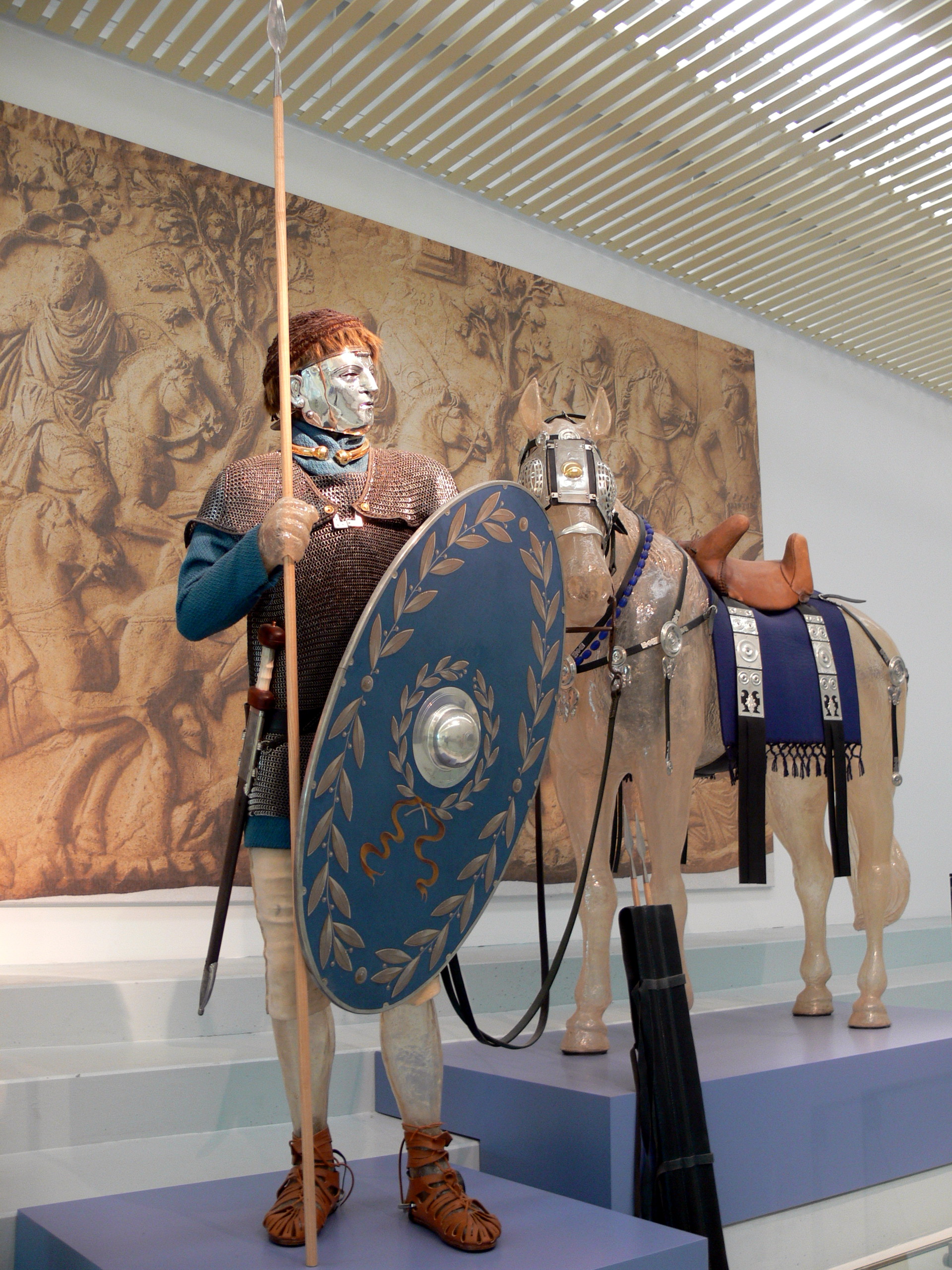Parma (shield) on:
[Wikipedia]
[Google]
[Amazon]
A ''parma'' or ''parmula'' (the diminutive of ''parma'') was a type of round shield used by the Roman

Parma
(Smith's Dictionary of Greek and Roman Antiquities at
army
An army (from Old French ''armee'', itself derived from the Latin verb ''armāre'', meaning "to arm", and related to the Latin noun ''arma'', meaning "arms" or "weapons"), ground force or land force is a fighting force that fights primarily on ...
, especially during the later period of imperial history since 3rd century
The 3rd century was the period from 201 ( CCI) to 300 ( CCC) Anno Domini (AD) or Common Era (CE) in the Julian calendar..
In this century, the Roman Empire saw a crisis, starting with the assassination of the Roman Emperor Severus Alexander ...
.
Characteristics
The ''parma'' was about 36 inches (91 cm) across (or less) and had iron in its frame, making it a very effective piece of armour. ''Parmae'' had handles and shield bosses (''umbones''). The ''parma'' was used by legionnaires in the early republican period of Rome's history, by the lowest class division of the army— the '' velites''. Their equipment consisted of a ''parma'', javelin, sword and helmet. Later, the ''parma'' was replaced by the body-length '' scutum'' as ''velites'' were phased out with theMarian reforms
The Marian reforms were reforms of the ancient Roman army implemented in 107 BC by the statesman Gaius Marius, for whom they were later named. The reforms originated as a reaction to the military and logistical stagnation of the Roman Republic in ...
. 
War use
It was used mainly by auxiliary infantry and cavalry, with thelegionaries
The Roman legionary (in Latin ''legionarius'', plural ''legionarii'') was a professional heavy infantryman of the Roman army after the Marian reforms. These soldiers would conquer and defend the territories of ancient Rome during the late Repu ...
preferring the heavier but more protective ''scutum'', during earlier periods. It was used also by '' signiferi'' (standard bearers).
In Virgil
Publius Vergilius Maro (; traditional dates 15 October 7021 September 19 BC), usually called Virgil or Vergil ( ) in English, was an ancient Roman poet of the Augustan period. He composed three of the most famous poems in Latin literature: t ...
's ''Aeneid
The ''Aeneid'' ( ; la, Aenē̆is or ) is a Latin Epic poetry, epic poem, written by Virgil between 29 and 19 BC, that tells the legendary story of Aeneas, a Troy, Trojan who fled the Trojan_War#Sack_of_Troy, fall of Troy and travelled to ...
'', the ''parma'' is cited as a weapon utilised by the Teucrians in defence against the Greeks ( Battle of Troy), and later against the Rutulians.
Other uses
The ''parmula'' was the shield used by thraex gladiators. It was also used by the Roman ''vexilliferi'' or flag bearers that carried the standard that marked the cohort, as well as by most early auxiliaries. In thePyrrhic dance
The Pyrrhichios or Pyrrhike dance ("Pyrrhic dance"; Ancient Greek: πυρρίχιος or πυρρίχη, but often misspelled as πυρρίχειος or πυρήχειος) was the best known war dance of the Greeks. It was probably of Dorian ori ...
it was raised above the head and struck with a sword so as to emit a loud ringing noise.
See also
*Clipeus
In the military of classical antiquity, a ''clipeus'' (, Ancient Greek: ἀσπίς) was a large shield worn by the Greek hoplites and Romans as a piece of defensive armor, which they carried upon the arm, to protect them from the blows of t ...
*Roman military personal equipment
Roman military personal equipment was produced in large numbers to established patterns, and used in an established manner. These standard patterns and uses were called the ''res militaris'' or ''disciplina''. Its regular practice during the Roma ...
References
External links
Parma
(Smith's Dictionary of Greek and Roman Antiquities at
LacusCurtius
LacusCurtius is a website specializing in ancient Rome, currently hosted on a server at the University of Chicago. It went online on August 26, 1997; in July 2021 it had "3707 webpages, 765 photos, 772 drawings & engravings, 120 plans, 139 maps." T ...
)
Roman shields
Roman auxiliaries
Late Roman military
{{AncientRome-mil-stub